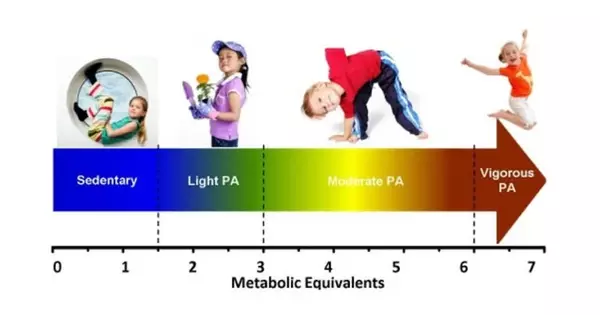Excessive sedentary time in youth, such as lengthy periods of sitting and low levels of physical exercise, has been linked to a variety of health concerns, including obesity, cardiovascular problems, and metabolic diseases, according to research. Sedentary behaviors in children were linked to an increased risk of acquiring obesity and related disorders, perhaps increasing the possibility of heart problems in age.
According to a study presented at the ESC Congress 2023.1, hours of inactivity throughout childhood may be laying the groundwork for heart attacks and strokes later in life. Sedentary time accrued from childhood to young adulthood was linked to cardiac damage, even in those with normal weight and blood pressure, according to the study.
“All those hours of screen time in young people add up to a heavier heart, which we know from studies in adults raises the likelihood of heart attack and stroke,” said study author Dr. Andrew Agbaje of the University of Eastern Finland, Kuopio, Finland. “Children and teenagers need to move more to protect their long-term health.”
All those hours of screen time in young people add up to a heavier heart, which we know from studies in adults raises the likelihood of heart attack and stroke. Children and teenagers need to move more to protect their long-term health.
Dr. Andrew Agbaje
This was the first study to look at the long-term impact of smartwatch-measured inactive time on heart injury in young people. It was carried out as part of the Children of the 1990s project, which began in 1990/1991 and is one of the world’s largest cohorts with lifestyle assessments from birth.
Children aged 11 wore a smartwatch equipped with an activity tracker for seven days. This was repeated at 15 and 24 years old. The weight of the heart’s left ventricle was measured using an echocardiogram, a form of ultrasound exam, at 17 and 24 years old and reported in grams relative to height (g/m2.7). The researchers analyzed the association between sedentary time between 11 and 24 years of age and heart measurements between 17 and 24 years of age after adjusting for factors that could influence the relationship including age, sex, blood pressure, body fat, smoking, physical activity and socioeconomic status.
The study included 766 children, of whom 55% were girls and 45% were boys. At 11 years of age, children were sedentary for an average of 362 minutes a day, rising to 474 minutes a day in adolescence (15 years of age), and 531 minutes a day in young adulthood (24 years of age). This means that sedentary time increased by an average of 169 minutes (2.8 hours) a day between childhood and young adulthood.

One possible reason for the association between childhood inactive time and adult heart disease is the development of risk factors such as obesity, high blood pressure, and insulin resistance. If these risk factors are established in childhood, they may remain into adulthood and raise the risk of cardiovascular disease.
Each one-minute increase in sedentary time between the ages of 11 and 24 was linked with a 0.004 g/m2.7 rise in left ventricular mass between the ages of 17 and 24. When multiplied by 169 minutes of additional inactivity, this translates to a daily rise of 0.7 g/m2.7, which is equivalent to a 3-gram increase in left ventricular mass between echocardiography measurements at the average height gain. A previous study in adults found that a similar increase in left ventricular mass (1 g/m2.7) over a seven-year period was associated with a two-fold increased risk of heart disease, stroke, and death.
“Children were sedentary for more than six hours a day, and this increased by nearly three hours a day by the time they reached young adulthood,” Dr. Agbaje stated. According to our findings, the accumulation of idle time is linked to cardiac damage regardless of body weight or blood pressure. Parents should urge their children and teenagers to move more by going for a walk with them and reducing their time spent on social media and video games. ‘If you can’t fly, run,’ urged Martin Luther King Jr. If you can’t run, at least walk. Crawl if you can’t walk. But, please, keep moving.'”
















